Sustainability-conscious customers are increasing pressure on companies to reduce plastic packaging waste, and to use more renewable resources. Companies are also taking greater responsibility for ensuring their products and practices have minimal impact on the planet. In turn, those pressures are being pushed upstream to packaging producers, and from them to polymer manufacturers and their raw materials suppliers.
Regulatory pushes for recycling are starting to add pressure, too. The European Commission’s single-use plastics directive mandates minimum levels of recycled content for PET bottles, for example, and the commission is currently revising its Packaging and Packaging Waste Directive, which is expected to apply similar mandates for all plastic packaging. Trade association Plastics Europe has suggested 30% would be appropriate and a similar figure has been suggested by the American Chemistry Council in the US.
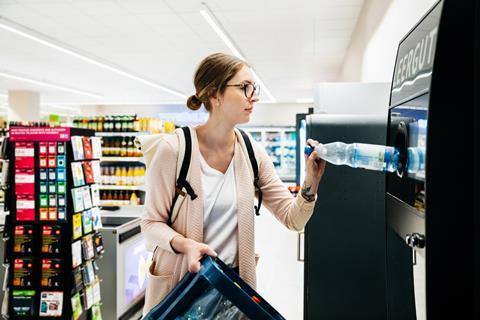
Developing greener chemicals and materials to enable a shift to more sustainable practices presents numerous challenges. Analytical chemistry plays an important, if often unrecognised, part in meeting those challenges - from ensuring that new materials are as safe as the materials they are replacing, to assessing whether a polymer made from renewable feedstocks performs as well as its established petroleum-derived counterparts. Analytical techniques also have a huge role to play in plastic recycling, by giving an insight into how safe reprocessed materials are, and how they behave.
‘When you reformulate a plastic with renewables, is it still safe?’ says Ben MacCreath, strategic programme development manager at Waters Corporation. ‘Changing to renewable sources means a whole new set of unwanted by-products from plastics will need to be captured, identified and quantified – that’s a huge task for the analytical lab. People rely on our analytics to work out what’s in there, and how much of it there is. What can leach out into the environment? Liquid chromatography–mass spectrometry (LC–MS), for example, can be used to detect problematic compounds that might migrate out of the plastic.’
Scientists need analytical tools that help … to comply with the recycling regulations and mandates that are changing rapidly
Ben MacCreath, strategic programme development manager, Waters Corporation
At the other end of the lifecycle lies plastic waste. It can be incinerated to generate energy, but recycling is a better use of those precious resources that also avoids unnecessary carbon emissions. ‘Companies have been making bold declarations about their stance on plastics recycling,’ says Michael Onepe, marketing development manager at the TA Instruments division of Waters Corporation. While in the future there is the prospect of chemically recycled plastic, he says, this is still in its infancy, and requires heavy energy use. Today, mechanical recycling – chopping up the old plastic and reprocessing it – is still the predominate method.
While reusing plastic may seem like a positive practice, there are many variables to consider. With virgin resin, there will be a small amount of variability from batch to batch, but it remains within tight specifications. Plastic offcuts from factory production will also be fairly homogeneous, but post-consumer waste can be hugely heterogeneous. As well as the mixture of polymers, it will be full of performance-enhancing additives, from colourants and pigments to processing aids and fillers, all of which can impact how plastic waste behaves in the recycling process. Analytical chemistry is the key to understanding those changes.
‘Suddenly you have unknown chemicals in the waste plastic, rather than the tight supply chain control with virgin resin,’ MacCreath says. ‘And what about historical waste? It might have been in contact with something unpleasant or could contain now-banned additives. How do you deal with that? There are suddenly far more questions to answer which increases the need for analytical insight.’
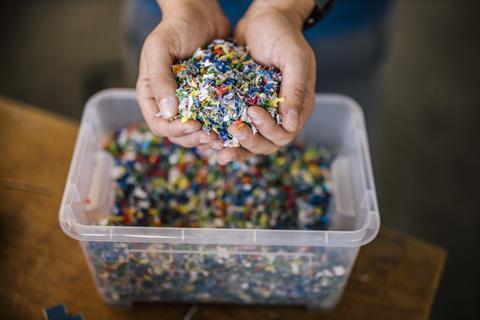
When testing resins, MacCreath says, sampling is already a contentious issue even with virgin material due to the inherent heterogeneity of polymer synthesis, formulation and production even under tightly controlled processes. But for a large container of mechanically recycled plastic, the challenge looks daunting. ‘While it’s the same analytical process, not only do you have to look across a broader chemical space, but there are more unknowns, and less knowledge of provenance,’ he says. ‘From one pellet to the next, the composition could be quite different, especially from batch-to-batch. Sampling and formulation challenges are coming at a scale and speed unfamiliar to industry, scientists need analytical tools that help to overcome these if industry is to comply with the recycling regulations and mandates that are changing rapidly.’
The easiest post-consumer plastic to recycle is Polyethylene Terephthalate (PET) water bottles – mechanically recycling the PET, and adding it back into the manufacturing process works very well. The inherent properties of PET mean there are few additives to worry about, and if the bottle has only ever contained water, and the locality has a recycling infrastructure, it will also be pretty clean. Conversely, the most common class of polymer, polyolefins, are more difficult. They require more additives to perform their original application and cover a much broader range of applications, resulting in more additive residues. The cost and practicalities of solving this means that the recycled material is often downcycled, that is used in lower value applications than the original. For instance, packaging is a major application space but regulators are still hesitant to permit the use of recycled polyolefins for applications with safety regulations such as food contact materials (FCM).
Onepe adds that there’s a lot of variability within the plastic waste stream, even when the polymer itself is ostensibly the same. ‘Polypropylene may contain some polyethylene,’ he says. ‘This will affect its mechanical properties, and how it flows during processing. How can we design plastics so they can be recycled more easily?’
Analytical techniques that study thermal and rheological properties, how they change, and how this affects the material’s performance, are critical for successful recycling. Techniques such as differential scanning calorimetry (DSC), thermogravimetric analysis (TGA), and rheology can give real insights into this behaviour, Onepe says. ‘Now that people are shifting from using virgin plastics to recycled plastics, how will this affect the material’s physical properties, processing and performance?’ he says. ‘These are the types of answers TA Instruments can help provide.’
We’re looking at the effects of different percentages of regranulate on performance … LC-MS has been essential in identifying markers
Pascal Tuszewski, project manager, thyssenkrup
Recycled plastic has gone through multiple stresses already during the recycling process – both during its initial processing and then in use, which can alter its composition. ‘Again, our instruments can give you an indication of the performance properties left in [used plastics],’ MacCreath says. ‘For example Gel Permeation Chromatography (GPC) can tell you about chain lengths, as these degrade through various stresses over a plastics lifetime including during the recycling process itself, so its performance will not be as good. This can be improved by including some virgin material, or more additives, but then you have to be careful to check for potential migrant compounds again. It’s a difficult balance.’ It’s one thing if the recycled plastic will be turned into an inexpensive plastic garden table where toxicity and performance are less important, but it’s different if the plastic will be used for food contact, personal care, or critical, structural applications.
The German multinational company thyssenkrupp produces steering systems for a variety of car manufacturers, and as well as steel these include polyamide components. At its Liechtenstein facility, the team is looking to recycle waste polymer offcuts from production, as the design of some of the plastic components means the amount of waste can be significant. Pascal Tuszewski, project manager, says it is essential that the structure of the components remains perfect, and some of their automotive customers specify that they cannot be made from recycled material for fear it will impact performance.
Thyssenkrupp started a project with Waters to quantify the impact that recycling has on the material. ‘We’re using techniques such as GPC, MS, TGA and DSC to characterise the regranulates,’ Tuszewski says. ‘Importantly, they can also translate this into mechanical performance. We’re also doing DMA, mechanical testing for durability, as well as static performance measures like using tensile probes.’ Since recycled polymers will typically have shorter chain lengths, using GPC to measure the chain lengths and DSC for crystallinity is a key part of understanding how recycling affects the material’s durability. ‘The longer the chain, the bigger the crystalline fractions are, and the space between them … we can see in our testing rigs that longer polymer chains give better material performance,’ says Tuszewski.
It’s not as simple as just looking at the polymer, however. There are many other questions to consider: for example, additives that were present in the original material might decompose during processing, so do other additives need to be incorporated during recycling to restore the performance? These are the sort of questions they are now trying to answer. ‘We’re looking at the effects of different percentages of regranulate on performance,’ he says. ‘LC-MS has been essential in identifying markers.’
[Our customers] are looking at the environmental impact of their laboratories
Andrew Pastor, director of sustainability, Waters Corporation
Collaborations like this one between Waters and thyssenkrupp will be key to solving the plastics conundrum, Onepe believes. ‘A lot of companies are going through these challenges,’ he says. ‘Even though mechanical recycling dominates, there are still challenges because the waste has to be clean – it is difficult to work with impurities.’ And the energy requirement for advanced recycling is another part of the sustainability conundrum – recycling plastic reduces waste and materials consumption, but it can also reduce a company’s overall sustainability if it means an increased energy demand. ‘Companies want to minimise energy use as part of meeting their sustainability goals,’ he adds.
Waters is responding to that goal as well – making analysis more sustainable by designing more energy efficient instruments, for example. For Andrew Pastor, director of sustainability at Waters Corporation, this is an important aspect of the company’s scientific partnership with customers to help them meet their sustainability goals. ‘[Our customers] are looking at the environmental impact of their laboratories, including their instruments’ power consumption and the laboratory infrastructure required to run them. And some are looking at the analytical methods, and whether they could be modified to make them greener,’ he says.
Pastor cites the example of the company’s new Xevo TQ Absolute instrument, which sees a step gain in sensitivity for negative ions yet is smaller and quieter than comparable mass spectrometers from competitors, and importantly consumes less power and nitrogen. The system also generates less heat, which means the demands on air conditioning units will fall, too, helping in a reduced footprint as well as investment and running costs ‘As our customers go on this journey, we’re doing our best to support them,’ Pastor says.
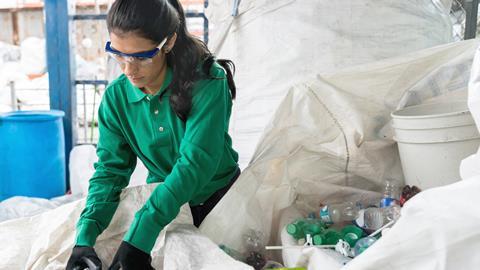
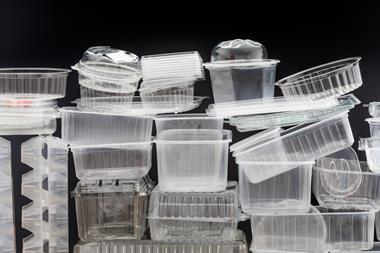


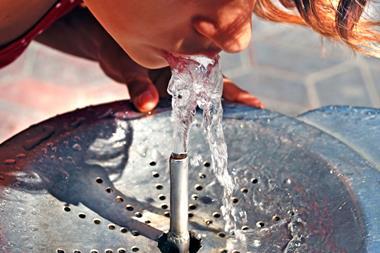
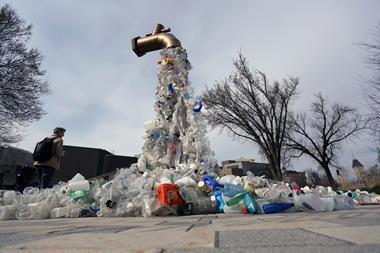


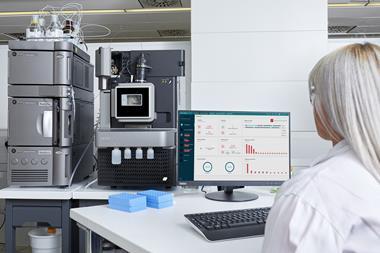
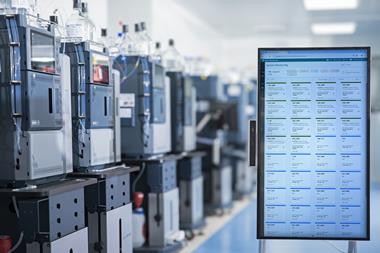

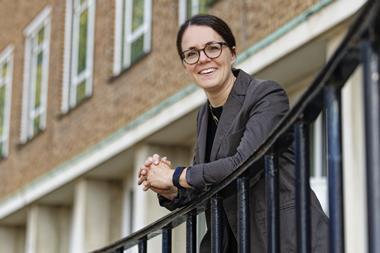
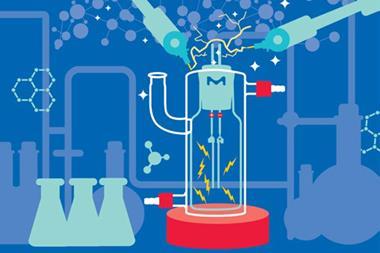
No comments yet